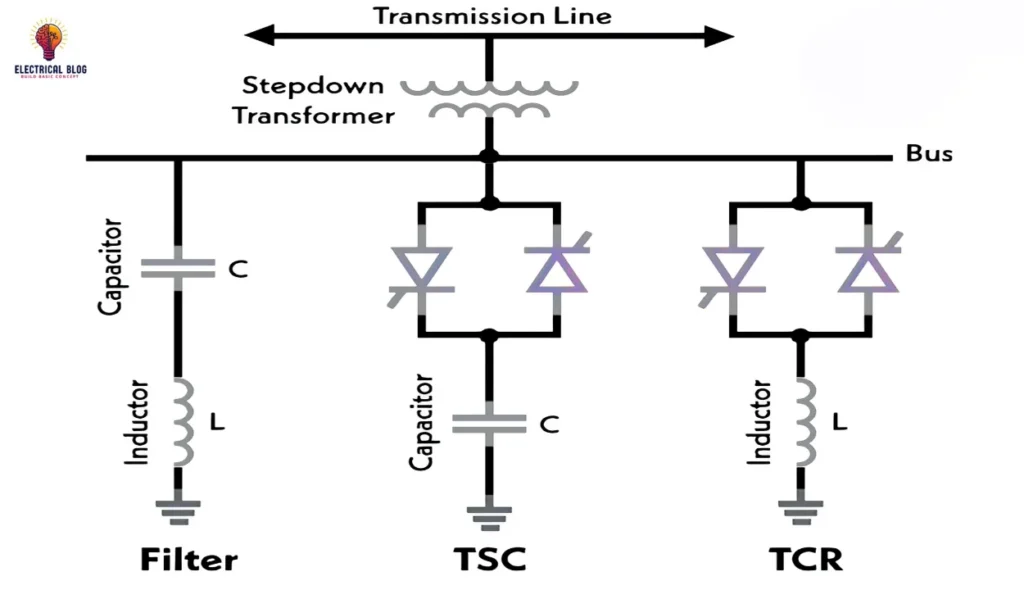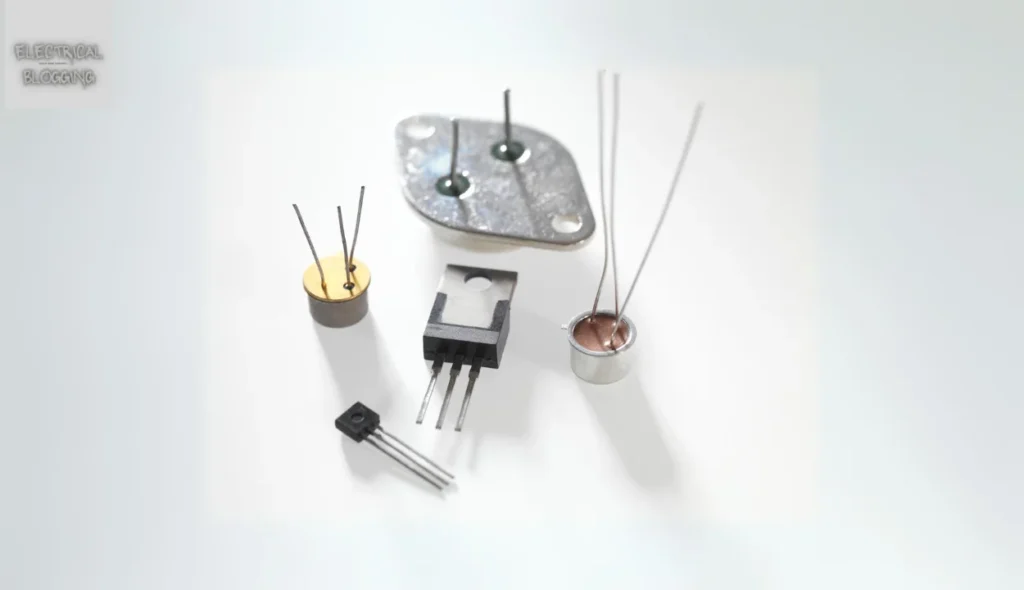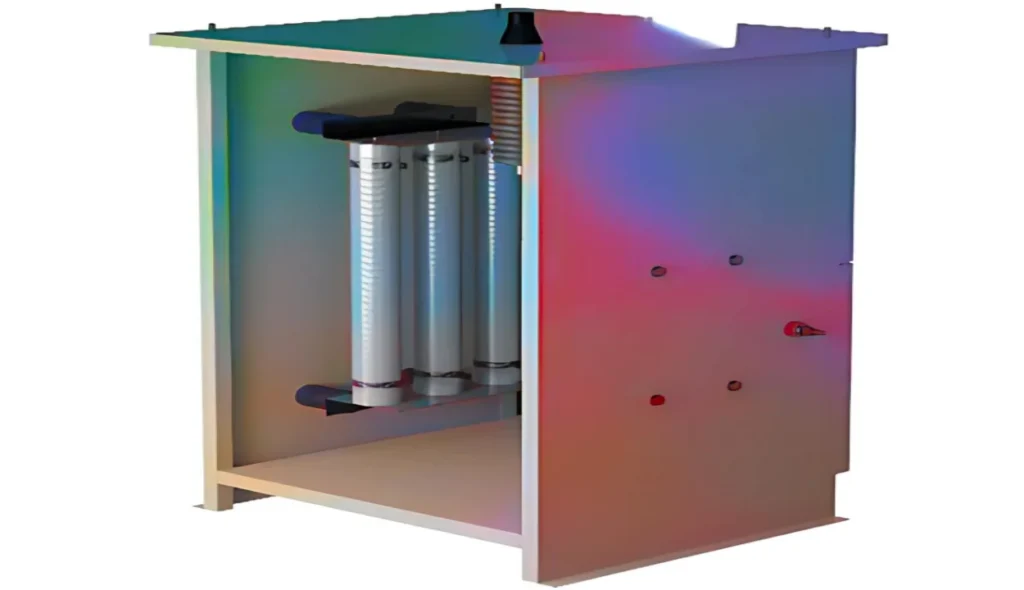What is a Static VAR Compensator?
In electrical systems, a Static VAR Compensator (SVC) is a fast-acting device used for regulating voltage and reactive power in transmission networks. It is designed to bring the system closer to a stable power factor by using thyristor-controlled components. Unlike rotating machines, such as synchronous condenser systems, an SVC has no significant moving parts, making it a more flexible and efficient compensator. By switching between capacitor banks and reactors, it effectively regulates high-voltage fluctuations.
An SVC is typically placed at key points in industrial and transmission applications to regulate grid conditions. In industrial settings, it is commonly connected near arc furnaces to stabilize rapidly varying loads and reduce flicker. In transmission, SVCs help improve the quality of the AC power supply by continuously adjusting impedance. The system uses thyristor-controlled reactors to consume excess reactive power when the load is leading, while switching in capacitor banks when the load is lagging.
The net result is a system that automatically adapts to changes, keeping voltage levels stable. The step-by-step activation of capacitor units allows fine-tuned regulation, ensuring higher efficiency in the power grid. Prior to SVCs, large machines were required to perform similar tasks, but these were costly and inefficient. With modern engineering, SVCs now provide a continuously adjustable set of power solutions that are more effective and compact.
Working Principle of Static VAR Compensator
An SVC works by adjusting reactive power in an electrical network, ensuring stable voltage levels. It uses capacitors, reactors, and filters to manage VAR injection and absorption. A TCR with an iron-cored or air-cored design and a TSC helps fine-tune the system. These elements operate through phase angle modulation, allowing smooth switching of banks for precise regulation.
The controller in an SVC is electronically managed to adjust high-power capacitors and reactors based on demand. A closed-loop design ensures real-time control, improving flexibility in handling harmonic disturbances. Odd-order harmonic signals can cause distortions, so specialized filters are installed. These filters have capacitive properties, which also contribute to MVARs in the circuit.
To maintain efficiency, heat generated by semiconductors is reduced using deionized water to cool the system. A mechanically operated breaker helps in emergency switching when faults occur. The waveform stability is ensured through modulation, which helps avoid power disruptions. Advanced supervisory control allows remote adjustment of the setpoint, offering better grid stability.
In manual or automated mode, SVC operations involve dynamic chopping of the capacitor bank to match varying demands. Shunt connections, including delta configurations, support better arrangements for grid stabilization. The combination of TCR, TSC, and high-power components makes the system reliable. These technologies play a critical role in ensuring a strong and balanced electrical grid.
Structure of Static VAR Compensator
A Static VAR Compensator (SVC) consists of several components that help regulate power flow in a transmission line. It includes thyristor-controlled reactors (TCR) and thyristor-switched capacitor (TSC) units, which are connected in parallel to adjust reactive injection or absorption. These components work together to stabilize voltage levels and improve the power factor of the system. Filters are used to eliminate harmonics and ensure smooth operation.
A microprocessor-based controller is responsible for monitoring the current and voltage, making real-time adjustments. It receives data from sensors and sends control signals to the thyristor devices, ensuring the desired performance. The control system adjusts power flow by modifying inductive or capacitive responses. This process maintains grid stability and allows precise regulation of VAR flow.
Additional auxiliary components like transformers, protective devices, and other support systems ensure proper functioning. These elements safeguard the SVC and extend its lifespan by preventing overload or electrical faults. The combination of TCR, TSC, and transformer units allows efficient inductive and capacitive absorption while keeping the grid stable. This ensures reliable operation for the system under changing power demands.
Static VAR Compensator diagram

Connection in SVC
The connection of an Static VAR Compensator depends on the voltage level and power requirements of the system. In industrial applications, it is often directly linked to a medium-voltage busbar at 33 kV or 34.5 kV, reducing the need for an extra transformer. In other cases, a bank of autotransformers helps step down the 230 kV transmission voltage to a lower level, such as 9.0 kV, which reduces the size and number of required components.
A common connection method is through the delta winding of Y-connected auto-transformers, linking one line voltage to another. The dynamic nature of an SVC comes from thyristors arranged in series and inverse-parallel, forming thyristor valves for smooth VAR compensation. These thyristor stacks are housed in a valve house to protect the disc-shaped semiconductors from external conditions. This setup ensures high efficiency and stable grid operation.
For electric arc furnace loads, SVCs are installed near the furnace to support rapid voltage changes. The steps involved in forming the SVC ensure it can handle large current variations. Since conductors carry high currents, they must be large enough to prevent overheating. The cost of these systems varies, but their effectiveness in stabilizing static compensation makes them essential in modern grids. With advanced winding designs and improved semiconductors, SVCs play a vital role in maintaining smooth voltage regulation.
Application of SVRs
Static VAR Compensator helps improve the stability of high-voltage transmission systems by managing fluctuations in load demand. It ensures a smooth and stable power supply, preventing voltage instability and other issues in industrial plants and large-scale grids.
By providing impedance compensation, SVR can help reduce losses and enhance power quality in the electrical network. It also assists in sectionalizing long lines, improving overall power factor performance, and increasing transfer capacity.
SVCs are essential for surge compensation, keeping the grid balanced and ensuring reliable power distribution. Their ability to optimize large systems makes them crucial in modern industrial applications, helping to maintain efficiency and prevent disruptions.
Advantages of SVR
Static VAR Compensators play a critical role in improving the performance of electrical grids while stabilizing operations in industrial plants.
By utilizing thyristor technology along with capacitor and reactor components, it enhances transmission reliability and efficiency.
Their ability to adjust impedance and power flow is key to keeping voltage stable in high-demand situations.
Their ability to handle varying loads ensures a more resilient and optimized system for modern energy infrastructure.
Conclusion
Static VAR Compensators (SVCs) play a crucial role in maintaining power stability in high-voltage transmission networks and large industrial systems. By managing fluctuations, optimizing impedance, and improving power quality, they help reduce losses and ensure a smooth, stable electrical grid.
Building an Static VAR Compensator needs important parts like thyristor-controlled reactors (TCRs), thyristor-switched capacitors (TSCs), filters, and controllers. These components work together to manage voltage and control reactive power. These systems often connect with autotransformers, delta windings, or direct busbar connections. The choice depends on the grid requirements.
Static VAR Compensators are used in industrial plants and transmission networks. They help with surge compensation, impedance regulation, and voltage stability. They can boost transfer capacity, divide long lines, and enhance power factor. This makes them vital for today’s electrical systems, ensuring efficiency and reliability.



